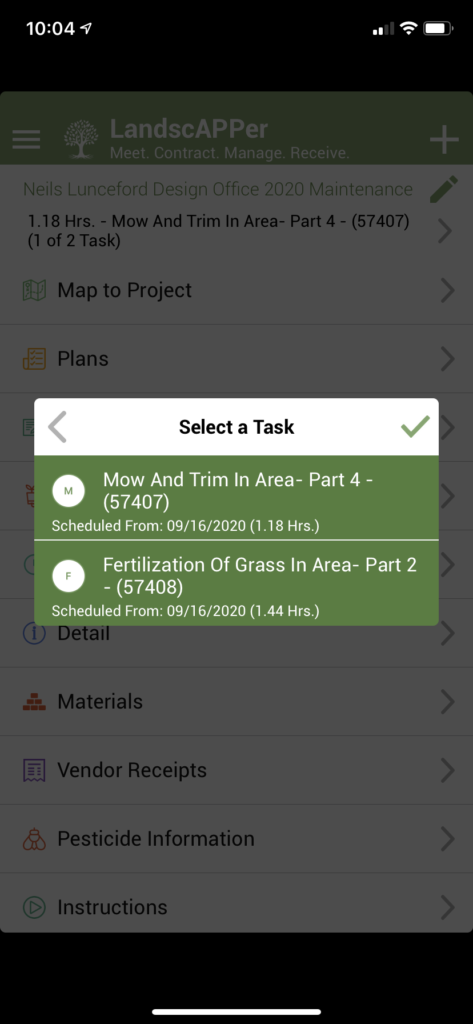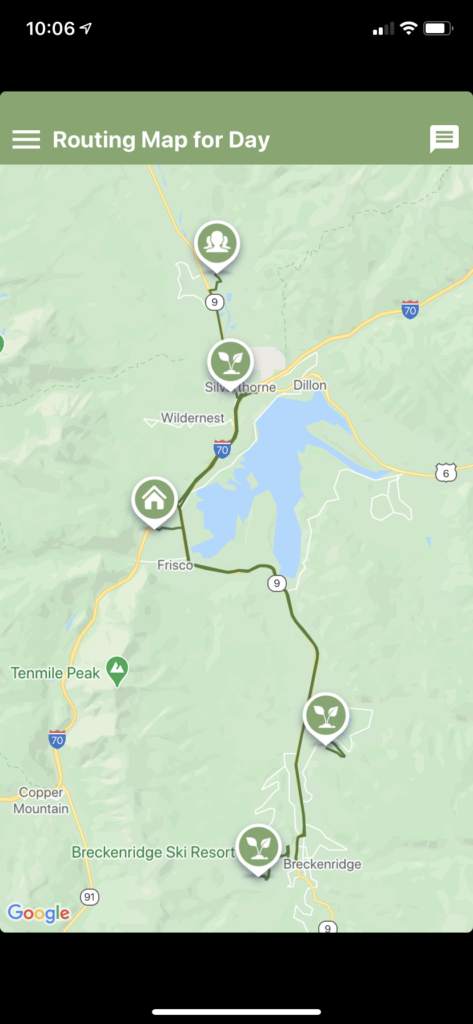
When Jeffrey Lunceford was considering how to update the computer systems at Neils Lunceford Inc., a major goal of his was to have near real-time business data to create more cost-effective, streamlined processes for long-term tracking of the landscaping company’s business operations. With a staff that grows to 175 employees during the high-altitude landscaping season, he also wanted a single system that met each user’s needs from in the field through management.
The company has two nurseries and garden centers in Summit and Grand counties, Colorado, and serves up to 1,400 clients around several mountain communities annually. A lot of project and product information is input not only at each business location but also at commercial and residential job sites spread across nearly 100 miles on both sides of I-70.
“One major reason for us to increase our computerization was to eliminate the volume of paper we were using. We were doing everything via paper: printing, handing it to employees, writing on it, handing it back and forth, reviewing it, doing data entry, and then creating a printed report,” said Lunceford, the company’s President and CEO.
The company went through “thousands and thousands” of sheets of paper, processed by crews and administrative staff daily. Using a paper system to run a business is an incredible expense, he said.
Attempting to Control the Process

Trying to avoid a major revolt from employees, who had been working in the same system for 15-plus years and would have to transition to a new system, was the biggest challenge. No existing system seemed like it would work for every employee in an effective and familiar manner. So, with the aid of computer programmers, Lunceford decided to develop a custom software system named LandscAPPer.
“I started looking at the systems out there. There were good ones but none did exactly what I wanted them to do,” he explained. “Many systems had some functions that I needed, but no system had all of the features needed to run my business.”
Another significant factor in creating a custom system was to avoid manually recreating all the contracts, forms, spreadsheets, and other documents into new formats in a new system. Due to the size of Neils Lunceford, that would have been a major undertaking.
“For other companies, the question is: where is the tipping point where the ROI makes sense to build a system to fit your needs? For someone with 30 clients, reworking that data into a pre-packaged system may not be too big of a deal. You have to decide at what point the value changes,” he said.

Having implemented LandscAPPer last year, Lunceford recommends lots of up-front research for anyone trying to do the same for their company. The complex systems are bound to have glitches that need ironing out, and system users will always find a way to break things, so he advised, be prepared for the time and expense of fixing unforeseen issues.
“I planned to develop the system in a year for ‘x’ amount, but it took four years and probably four times that amount. The system changed multiple times as we continued to add and adjust as we went,” he recalled.
The development started with the major effort of crafting a new database to align with the old database. Old spreadsheets were combined in ways to import into the new system, and similar wording and formats were preserved when possible.
While he enjoyed the challenge of addressing various needs, he said preparing for the necessary learning curves of different people was nearly impossible.
Keeping the System Operational

Every employee accesses LandscApper at some level, from crew members clocking in for the day to supervisors tracking projects and managers creating estimates. A mobile app is used in the field on smartphones or tablets, and a web application is used on laptop and desktop computers for managers and administration.
Customers have profiles in the system and receive contracts and invoices through it. But, payments are handled by a third-party processor.
With so many users, setting up system permissions and access levels was important. Each user is granted permission only to the information and data, such as contracts and client information, required to perform their job.
The system is backed up daily and sometimes more frequently. Redundant databases and servers are always in the background.
“Everything we do on the server side is through Amazon Web Services. They have done a great job of plug and play for all our needs,” he said. “From what I’ve seen cost-wise, they are also inexpensive to do so, and we can add on as we need.”
He recommends always being prepared with additional bandwidth for the services. LandscAPPer is set up to automatically expand server capacity based on usage.
“We learned the hard way when our system crashed several times last year. Intense data queries shut things down, and one employee on the mobile app tried to upload 35 high-resolution photos and crashed it,” he recalled.
The ability to expand for increased demand on the system with higher volumes of data transfer is key, especially for companies with big fluctuations in business activity. For landscape companies, for instance, hourly demand changes dramatically, with really heavy activity at the beginning and end of each work day when crews arrive at and prepare to depart from job sites. Then, the activity generally decreases in the middle of the day.
“Our server crashed two days in a row last June,” he said. “Everyone was trying to log in near the end of the day and they couldn’t, so I got eight to ten calls and texts all within 90 seconds and I knew we had a major problem.”
As with any technology, business computer systems need to evolve as issues come up and new needs arise. Lunceford is excited to continue adapting his custom system as a comprehensive solution for landscaping professionals.










